Abstract
Scratch any older electronics or telecommunications professional and there?s a good chance you?ll find an Amateur Radio operator. Amateur Radio operators of our fathers' or grandfathers' era typically set-up transmitting stations in sheds down the backyard with wire antennas strung between the trees. Talking to people around the world on HF amateur bands was cool then, as even a phone call interstate was tricky; you needed to book a time with the telephone trunk operator, and it cost a small fortune. The more adventurous amateurs experimented with frequencies above 30MHz, and many pushed the limits of the available technology. In 1947, an Australian amateur (VK5KL) made a two-way contact on 50MHz with an amateur in Hawaii (W7ACS/KH6), a path of 9000 km. That was esoteric stuff - how times have changed!
Introduction
On 12 December 1961, barely four years after the world?s first orbiting satellite was launched (Sputnik-1), an Amateur Radio satellite built by a group of amateurs in California was launched successfully, piggy-backed with a few other satellites (Amateur Radio 2015). A later amateur satellite (Oscar 5) was built in the late-1960s by Project Australis, a bunch of radio amateurs who were undergraduate students at Melbourne University. It was launched into low earth orbit (LEO) from Vandenberg Air Force Base in 1970. Oscar 5 operated on its battery power for 46 days and over that time the students compiled tracking reports from hundreds of amateur stations in 27 countries. Not bad for a satellite built on a shoestring budget using a bedspring for the release system and Stanley measuring tape for the antenna! An on-board experiment involved measuring the satellite?s case and internal temperatures which, astonishingly, revealed that the engineering algorithm previously used by space engineers to predict a satellite?s temperature was in error! Oscar 5?s design for a stabilisation scheme was cleverly simple, using on-board permanent magnets that reacted with the earth?s magnetic field to stabilise and orient it to obviate signal fading. Oscar 5?s stabilisation technology was later widely adopted and adapted by other LEO satellite makers.
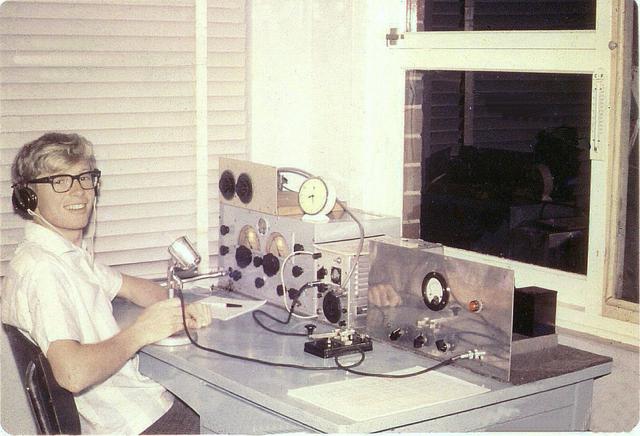
Figure 1: A typical "home brew" Amateur Radio station from the 1960's
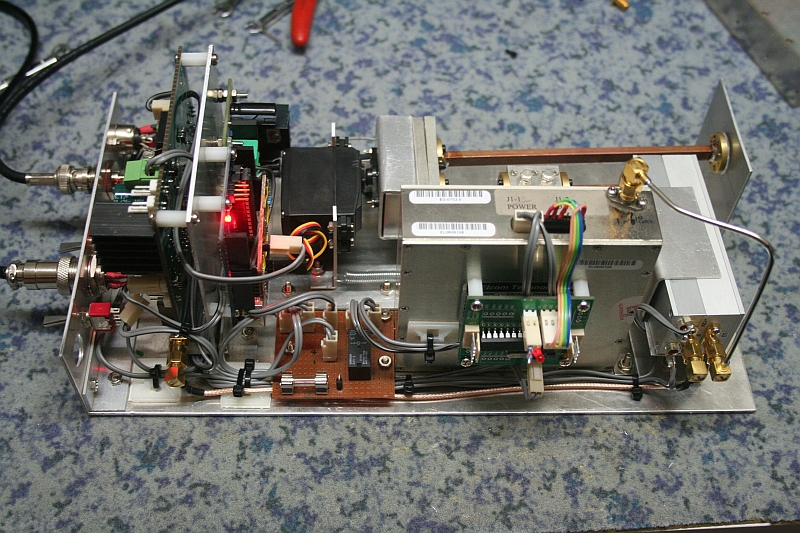
Figure 2: DIY ham microwave gear
Figure 2 shows a 47 GHz transverter that was made by VK4REX. Making your own equipment remains popular with today's radio amateurs, especially on the microwave bands as well as on the low frequency bands at 137 and 474 kHz.
Since 1961, over 70 amateur satellites have been launched. The oldest still operating and relaying Amateur Radio signals, is Oscar 7, launched in November 1974; a collaborative effort between US, Canadian, German and Australian radio amateurs.
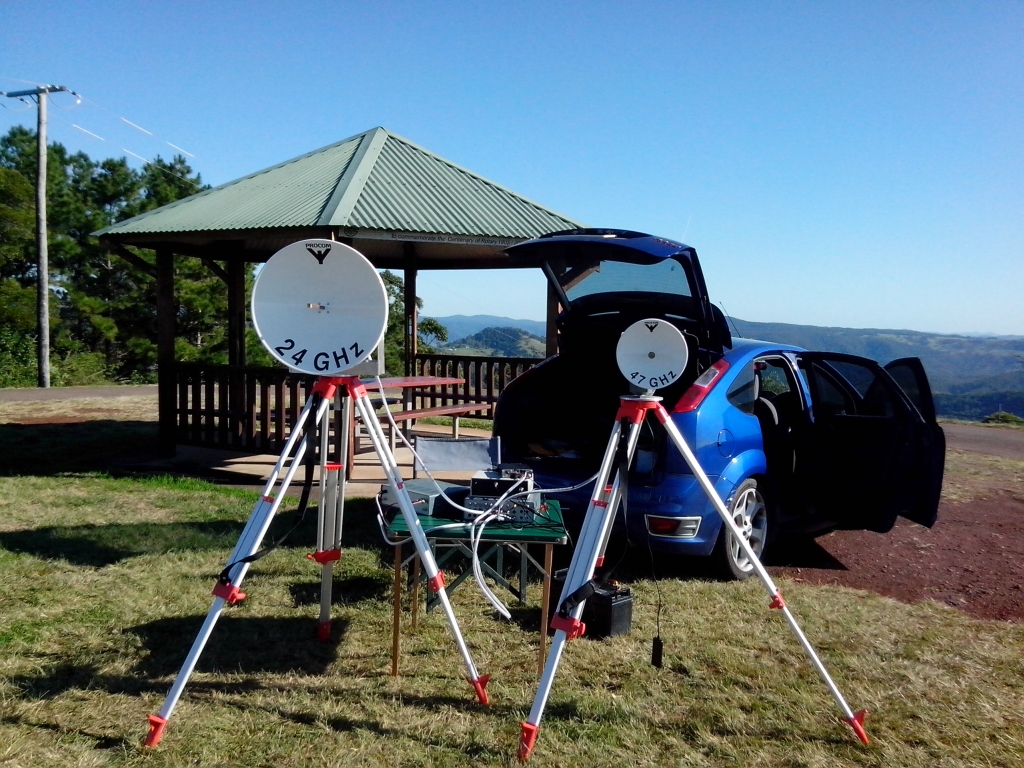
Figure 3: Ham microwave outdoors - VK4REX at Howell's Knob, South East Queensland
Figure 3 shows how operating from geographic vantage points is popular with amateur radio microwave enthusiasts.
The most recent satellite with an Amateur Radio payload is EO-80, a sun-synchronous ?cubesat? measuring 10cm x 10cm x 20cm. The primary function of EO-80 is to test systems designed for other cubesats, including
- an Attitude Determination and Control System,
- an Ion and Neutral Mass Spectrometer,
- an Oxygen Flux Probe, Satellite Control Software, and
- the quadpack deployer (a spring device that shoots cubesats out into space from the International Space Station).
The Amateur Radio transponder will be activated following the completion of the various scientific experiments. Meanwhile, the University of NSW?s BLUEsat Group, a team of undergraduate students, is active in developing ?easy-to-access space technology?, which includes Amateur Radio in communications systems. Amsat provides information on all amateur satellites (AMSAT 2015).
Some people are surprised to know that the International Space Station has a permanent Amateur Radio station. It?s used to provide some down-time for the astronauts and cosmonauts, and also provides the link for a NASA-sponsored education program, Amateur Radio aboard the International Space Station (ARISS) (2015). To quote NASA:
?With the help of Amateur Radio Clubs and ham radio operators, astronauts and cosmonauts aboard the International Space Station (ISS) have been speaking directly with large groups of the general public ? showing teachers, students, parents, and communities how Amateur Radio energises students about science, technology, and learning? (NASA 2015).
The overall goal of ARISS is to get students interested in mathematics and science by allowing them to talk directly with the crews living and working aboard the ISS. The program?s goal is to spark student interest in mathematics and science and inspire the next generation of explorers. Selected students learn about the station, radio waves and other topics, and prepare questions before their scheduled call. Hundreds more listen in from classrooms or auditoriums. Teachers report that the exceptional experience of talking with crew members in space ?holds the power to inspire greatness? and ?launches dreams?.
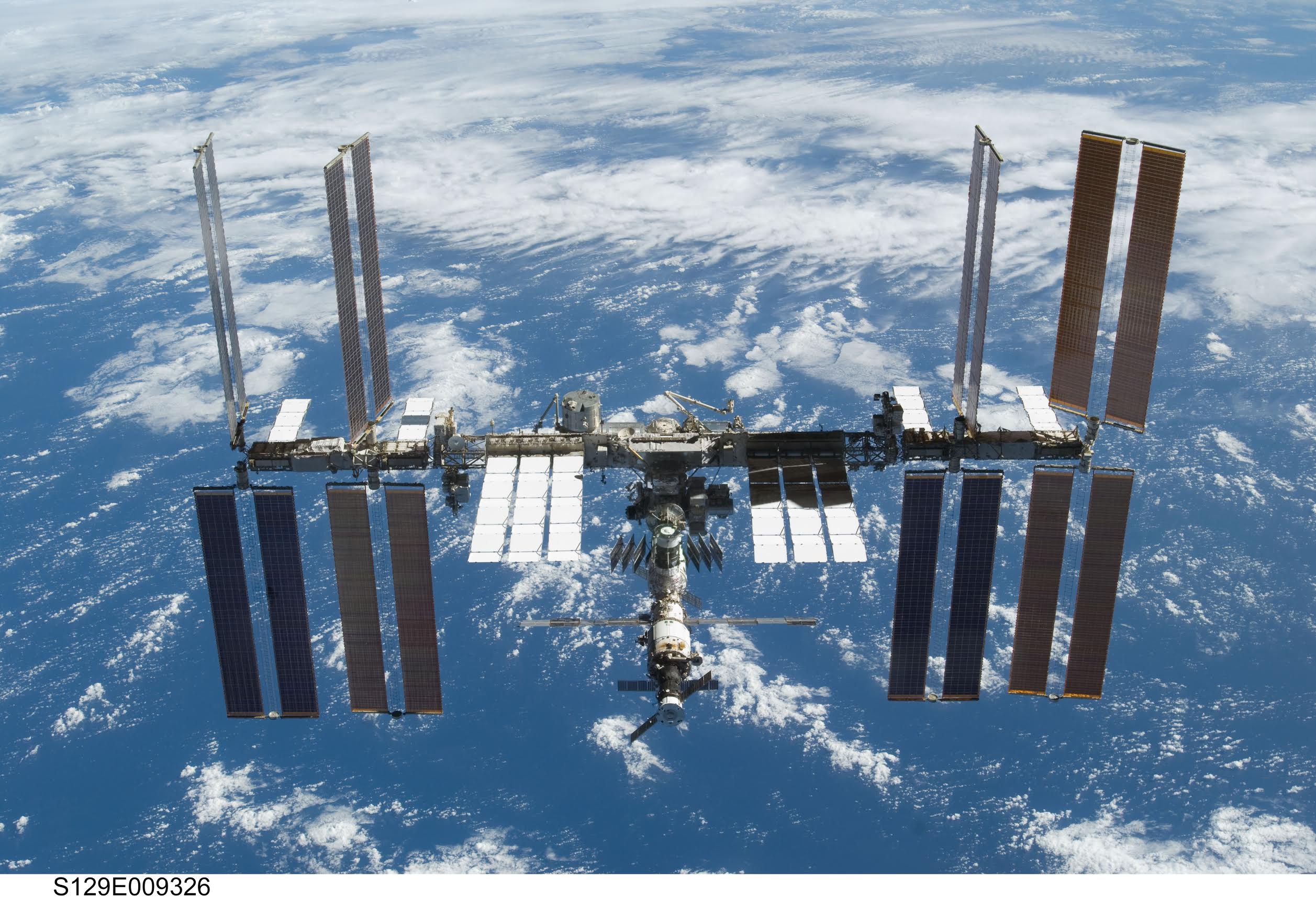
Figure 4: International Space Station
The ISS also has an orbiting beacon, amateur data packet repeater and a slow-scan television transmitter. A typical ground station for contacting the ISS station would include an inexpensive amateur transceiver with 25-100 watts of output power, and a steerable antenna system. Public domain software is available to help track when the ISS will be in range of the amateur ground station, and where to point the antenna.
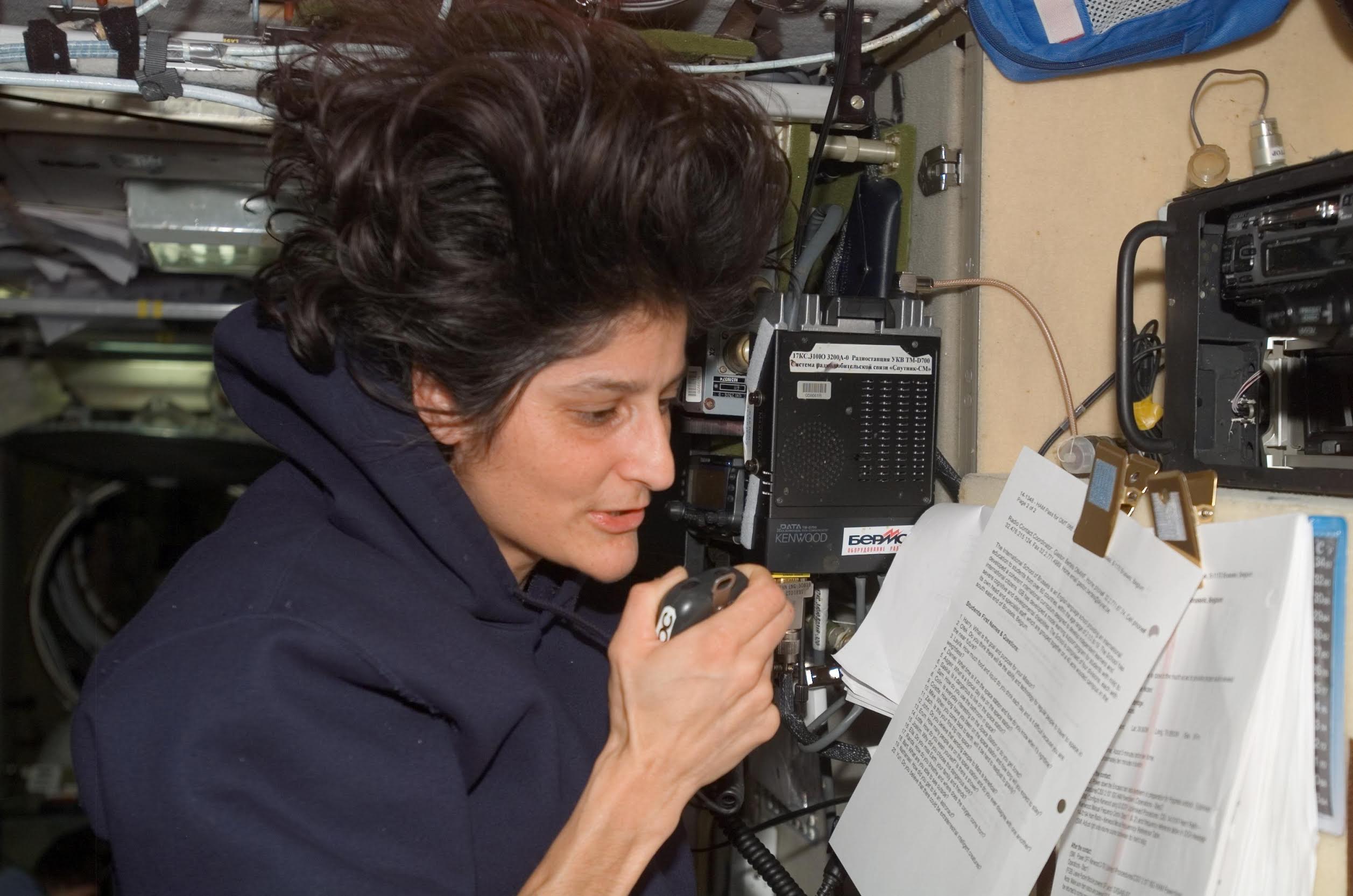
Figure 5: Flight Engineer Sunita Williams Talks with Students from the Zvezda Service Module
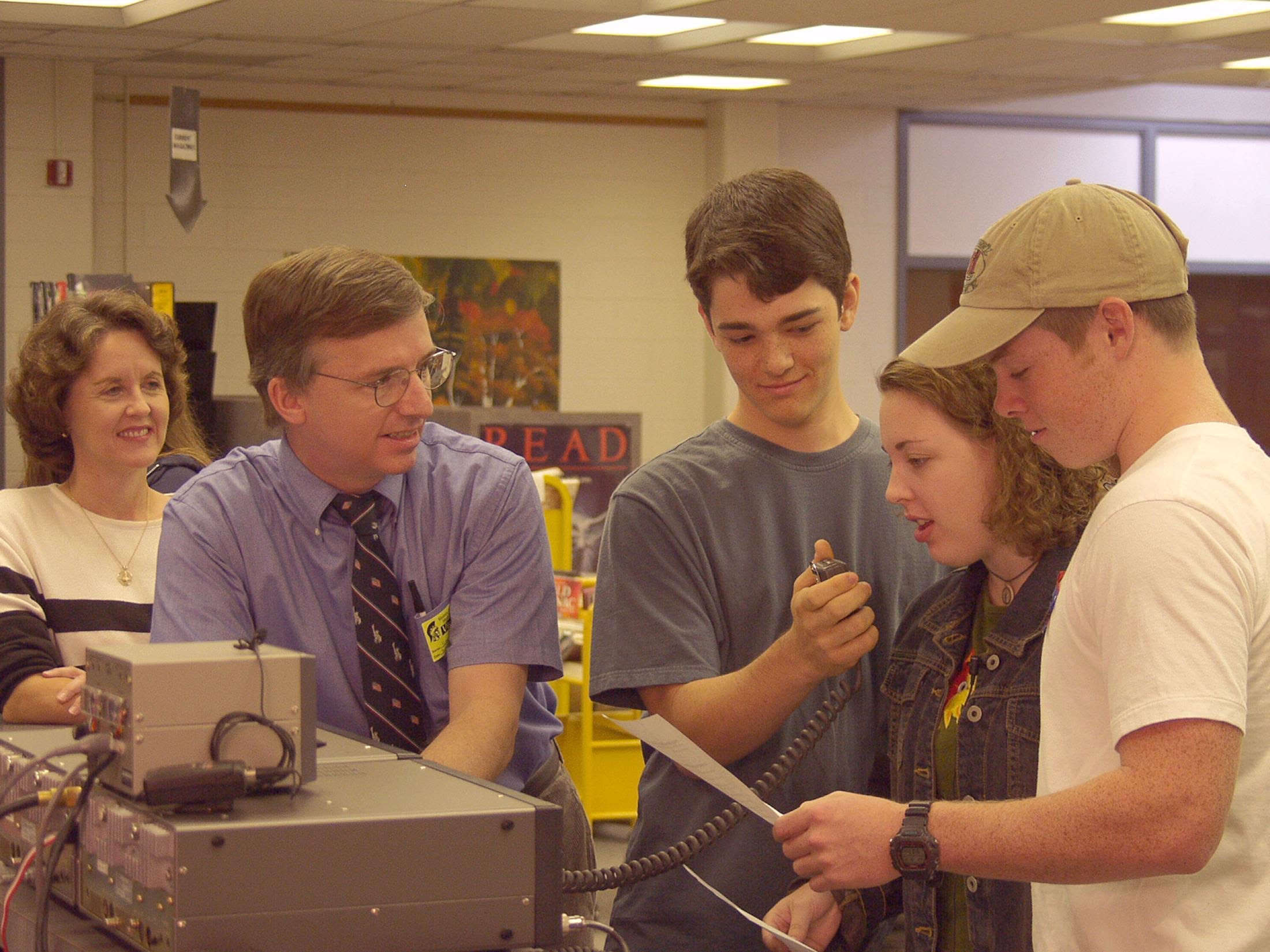
Figure 6: Students ask questions of the astronauts during a 10 minute pass of the International Space Station
Although many radio amateurs still simply talk over the radio, or participate in ?radio-sport? contests to see how many stations they can work in a set time, a large number of amateurs are now using the very latest technologies to communicate. Radio amateurs have been prolific in developing new data compression techniques, allowing narrower signal bandwidths and far superior noise immunity, and many amateurs now communicate reliably around the world using only flea-power transmitters and low-cost Raspberry Pi computers, extracting information from signals way below the radio noise floor, something impossible only a few years ago (Raspbian 2015).
Other radio amateurs are developing the hardware and software solutions for the new generation of software-defined radios (SDRs) with functionality limited only by their imagination, and their nation?s radio regulations, naturally. One such development is the open source CODEC designed by Australian amateur David Rowe (VK5DGR) (Rowe 2015), providing communications quality speech over narrowband/low bandwidth HF and VHF digital radios, and finding application in a number of diverse areas.
So, Amateur Radio has come a long way in the last half-century. It?s always been a hobby that just about anyone can get into on a modest budget, and it now caters for a very wide variety of interests indeed. In the age of Facebook and Twitter, it provides an opportunity to learn how communications technologies actually work, and takes followers beyond simply being consumers of packaged technology, into a much more interesting and challenging sphere. It can be combined with many other interests, such as ballooning (HORUS 2015; Linton 2015), orienteering, yachting, four-wheel driving or rocketry, and it might even lead into a lifelong career in science and technology.
The Wireless Institute of Australia
The representative body for Amateur Radio in Australia is the Wireless Institute of Australia (WIA) (2015), founded in 1910. A key role of the WIA is providing training and licence assessment services for people interested in obtaining their amateur licence, particularly young people. WIA appointees participate in the work of spectrum management, consultative and standards bodies, the Australian Radio Study Groups in preparatory work for World Radio Conferences (WRCs), Australian delegations to WRCs, and the Radiocommunications Consultative Council in Australia.
The WIA is a member of the International Amateur Radio Union (IARU 2015), which represents the interests of the amateur and amateur satellite services internationally and is recognised by the International Telecommunications Union. There are over three million Amateur Radio operators worldwide, with over 1.2 million in Japan, over 700,000 in the USA, and about 14,000 in Australia.
Although the WIA currently performs licence assessment and callsign functions under a Deed with the ACMA, ideally, the amateur service would like to have a greater degree of self-regulation. Self-regulation might include issuing licences and determining overseas amateur qualifications equivalency so that visiting and immigrating amateurs can more easily obtain an Australian qualification, and determining the relative privileges of the three licence grades, all within a broad set of regulatory boundaries set by the Commonwealth.
Amateur Radio Spectrum
The Amateur Radio service has either a Primary (exclusive) or Secondary (shared) user status on many amateur bands from 136 kHz right through to 300 GHz and above. VHF and UHF spectrum used by radio amateurs is coming under increasing pressure from existing and emerging telecommunications and entertainment services, particularly at 450MHz, 2300MHz and 3300MHz. The amateur service has recently acquired new spectrum around 136kHz and 475kHz, and WARC-15 has just approved a new international amateur allocation at 5MHz; however, that spectrum is fairly heavily used in Australia and it may be some time before it becomes available for Amateur Radio use in Australia.
Amateur Radio Regulation
The ACMA regulates the amateur services through the Radiocommunications Licence Conditions (Amateur Licence) (1997), which specifies the operating conditions such as frequency bands, permitted power, modes of transmission, methods of station control and many other conditions.
There are three amateur licensing grades in Australia: the Foundation licence (an entry level introductory licence), the Standard grade, and the Advanced grade. The three grades have different operating conditions and require different knowledge assessments in order to obtain the licence.
The Foundation licence has limited privileges, and only allows transmission on frequency bands below 450MHz, analogue voice modes and Morse code, and a maximum of 10 Watts of output power. The Foundation licence is easily achievable with a little study and passing a multiple choice exam along with a practical assessment. Standard and Advanced licensees have access to more frequency bands, digital and image modes, and higher permitted power, up to 400 watts peak for Advanced licensees.
The introduction of the Foundation licence in Australia over 10 years ago has largely offset a natural decline in the number of licensed radio amateurs, mostly due to age. Of the approximately 14,000 licensed radio amateurs in Australia, currently about 17% are Foundation grade, 14% Standard and about 69% Advanced grade. It is expected that the radio of Foundation grade licensees to other grades will continue to grow.
Need for Regulatory Change
As Amateur Radio is adopting new wireless communications technologies and moves into increasingly diverse applications ? such as spread spectrum on HF frequencies, very narrow band digital audio techniques, digital television, SDR radio, remote control and telemetry applications ? it is rapidly running up against the constraints of the regulation. While the current LCD was demonstrably an advance on its predecessors and generally served the amateur community well during a period of regulatory flux, it is now rather prescriptive and insufficiently flexible in many areas to accommodate emerging technology adaptations.
This is especially true of the Foundation licence (Wait 2014). Although its intended purpose was to improve the attractiveness and accessibility of the hobby and to attract young people with a technical interest, it offers little scope for experimentation and application in any of the new technologies that are likely to attracted young people. Additionally, ambiguities and disparities exist regarding the type of equipment that licensed radio amateurs can possess and operate, including the remote control of amateur stations and connection of amateur stations to the internet.
The WIA has recommended that Foundation grade licensees should be permitted to: transmit digital voice, data and images; connect computers to a transmitter; build their own transmitters from commercially available kitsets; use commercial transceivers which have been modified to transmit on the amateur bands; use unattended and remote control of a transmitter; operate through gateways connected to internet connected repeater networks; have access to additional frequency bands; and use a maximum output power of 25 Watts peak.
The WIA also recommended that the Standard and Advanced grades should have access to more frequency bands and be allowed to transmit higher power levels. Even our closest neighbour, New Zealand, allows its radio amateurs to transmit 1000 Watts peak, more than twice the maximum allowed in Australia. The WIA?s proposed changes to the Amateur LCD are intended to both make the hobby more relevant to newcomers, and also to bring the privileges of the higher licence grades into line with other similarly developed nations
Due to the scope of the WIA?s recommendations and the fact that the Commonwealth legislation for Amateur Radio was due to "sunset" on 1 October 2015, and had to be ?remade? quickly for the amateur service to continue in Australia, the ACMA chose to remake the amateur LCD with only minor amendments. The WIA expects that the ACMA will embark on a public consultation process in response to the WIA?s recommendations, and expects further changes to the amateur LCD will be made.
Australian Spectrum Policy and Management Framework Review
The WIA (WIA 2014a) made a submission to the July 2014 Department of Communications review into the Australian spectrum policy and management framework.
The WIA submitted that the Amateur Service has a long history of public service, both through emergency communications and as an educational resource, and that such public use of spectrum has an imputed value which cannot be measured using the same set of tools as a conventional market-oriented valuation approach. The same situation would apply for, say, defence, governmental or emergency services, research, meteorology and safety-of-life services.
The WIA noted that Amateur spectrum usage holds the potential for greater public benefit, especially for non-commercial educational and pure research purposes that might enable innovative developments while still allowing traditional Amateur Radio activities.
The WIA also made the following recommendations, summarised below:
- Simplification of the framework to reduce its complexity and impact on spectrum users and administrators.
- Administrative efficiency through a minimum 5-year licence term for Amateur Radio, and self-administration of the hobby by the WIA (possibly through an Industry Code).
- Improved flexibility.
- Greater resources directed to the ACMA to protect the radio frequency spectrum from interference.
- Removal of the ability for spectrum to be retained by certain licensees (generally commercial, for-profit) indefinitely, regardless of use.
- Encourage new technologies such as cognitive radio, together with regulatory innovation, such as parameter-based licensing, to help maximise spectrum efficiency.
- Achieve a clear distinction between policy formation and policy implementation, which will be best achieved by maintaining both a well-resourced department and regulator.
The WIA (2014b) lodged a second submission to the Department of Communications Spectrum Review Potential Reform Directions Paper, released in November 2014.
The Department of Communications then released its Spectrum Review Report, recommending replacement of the Radiocommunications Act with a new Act and reforming the current licensing framework into a single licensing system. The report?s recommendations cover new legislation, a single licensing system, user involvement in spectrum management, improved compliance and enforcement measures, government spectrum use and spectrum pricing, among others.
It must be said that the implications for Amateur Radio licensing and the WIA are far-reaching, and the WIA looks forward to exploring the opportunities further.
Conclusion
Amateur Radio has changed significantly over its long history and, these days, Amateur Radio presents a very wide range of opportunities and experiences for its participants. The WIA believes that Amateur Radio has an ?imputed? public value which cannot easily be measured. There is an opportunity to increase the public value of Amateur Radio by encouraging the use of Amateur Radio spectrum for non-profit educational and research purposes, naturally with the appropriate safeguards to avoid unwanted interference to other licensees.
The Wireless Institute of Australia, as the representative body for Amateur Radio, is highly engaged with its members and is committed to the Commonwealth?s Spectrum Policy and Management Framework Review. The WIA believes there is a window of opportunity for the amateur service to take greater responsibility in the management of Amateur Radio, through self-determination and self-regulation, possibly including the development of an Industry Code. The WIA is keen to take up that challenge on behalf of all Australian radio amateurs.
References
Amateur Radio. 2015. USA Amateur Radio History and Licensing. Accessed online on 1 December 2015 at http://www.ac6v.com/history.htm
AMSAT. 2015. Amateur Radio in Space. Accessed online on 1 December 2015 at http://www.amsat.org/
ARRIS. 2015. Amateur Radio on the International Space Station. Accessed online on 1 December 2015 at http://www.ariss.org/
Australian Government. 1997. Radiocommunications Licence Conditions (Amateur Licence). (1997). Commonwealth of Australia, Legislation. Accessed online on 1 December 2015 at https://www.comlaw.gov.au/Details/F2010C00897
HORUS. 2015. Project HORUS, High Altitude Balloon Project. Accessed online on 1 December 2015 at http://projecthorus.org/
IARU. 2015. International Amateur Radio Union. Accessed online on 1 December 2015 at http://www.iaru.org
Linton, J. 2015. Aussie high altitude flight heads home. Accessed online on 1 December 2015 at http://www.wia.org.au/newsevents/news/2015/20150116-1/index.php
NASA. 2015. Amateur Radio on the International Space Station. Accessed online on 1 December 2015 at https://www.nasa.gov/mission_pages/station/research/ops/research_teacher/ariss.html
Raspbian. 2015. To install Raspbian software on a Raspberry Pi. Accessed online on 1 December 2015 at http://www.raspberryconnect.com/raspbian-packages-list/item/71-raspbian-hamradio
Rowe, D. 2015. Codec 2, Rowetel. Accessed online on 1 December 2015 at http://www.rowetel.com/blog/?page_id=452
Wait, P. 2014, Remake of the Amateur LCD. Accessed online on 1 December 2015 at http://www.wia.org.au/newsevents/news/2014/20140901-2/index.php
WIA. 2014a. WIA makes its submission to Australian Government Spectrum Review. Accessed online on 1 December 2015 at http://www.wia.org.au/newsevents/news/2014/20140901-1/index.php
WIA. 2014b. WIA submits comments on the Government?s Potential Reform Directions paper. Accessed online on 1 December 2015 at http://www.wia.org.au/newsevents/news/2014/20141204-1/index.php
WIA. 2015.Wireless Institute of Australia. Accessed online on 1 December 2015 at http://www.wia.org.au
